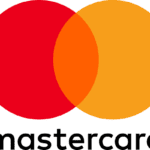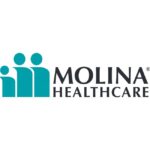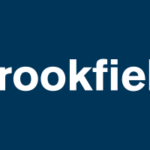HCA Healthcare Inc. (HCA) Stock Analysis
HCA Healthcare, Inc. (HCA) Stock Analysis
As of February 16, 2025
1. Company Overview
HCA Healthcare, Inc. (NYSE: HCA) is one of the largest hospital operators in the United States, operating general acute-care hospitals, freestanding surgery centers, and various outpatient facilities. Headquartered in Nashville, Tennessee, HCA offers a wide range of healthcare services including surgery, emergency care, diagnostic services, and specialty care. The company’s strategic focus lies in clinical quality, cost efficiency, and operational scale across its network of hospitals and outpatient centers.
Key Business Segments
1. Acute Care Hospitals
o Core business includes a large portfolio of hospitals offering emergency, surgical, and other inpatient services.
2. Outpatient & Ambulatory Services
o Operates outpatient surgery centers, diagnostic imaging centers, and other ambulatory facilities for lower-cost, high-volume procedures.
3. Physician Services
o Employs or partners with physicians, covering a range of specialties such as cardiology, oncology, orthopedics, etc.
4. Specialty Services
o Provides behavioral health, urgent care, telemedicine, and post-acute care.
Strategic Initiatives
- Operational Excellence: Emphasizing cost control, patient throughput, and efficiency in hospital operations.
- Outpatient Shift: Expanding ambulatory surgery centers and outpatient services to capture patient volume in lower-cost settings.
- Physician Alignment: Strengthening relationships with physician groups and employing or affiliating with more specialists.
- Capital Deployment: Focus on strategic M&A, facility expansions, technology upgrades, and robust share repurchases/dividends.
2. Financial Performance
a. Revenue and Growth
- TTM Revenue: $70.60 Billion
- YoY Revenue Growth: ~8.67% (latest quarter)
Analysis
HCA’s revenue continues to grow at a high single-digit rate, aided by organic increases in patient admissions, service expansions, and incremental price/mix improvements. While reimbursement pressures and regulatory changes are ongoing risks, the large scale of HCA’s hospital network typically supports stable top-line expansion.
b. Profitability
- Net Income (TTM): $5.76 Billion
- EPS (TTM): $22.00
- Profit Margin (TTM): 8.16%
- Return on Equity (ROE): 824.40% (distorted by negative or small book equity)
Analysis
HCA maintains healthy profitability for a hospital operator, with an 8.16% net margin. The extremely high ROE figure is skewed by the company’s small or negative book equity (due to high debt and share repurchases). Nevertheless, HCA consistently delivers robust earnings, thanks to strong operating margins and economies of scale.
c. Margins
- Gross Margin (TTM): 40.62%
- Operating Margin (TTM): 14.94%
- Profit Margin (TTM): 8.16%
Analysis
The gross margin around 40–41% indicates cost management in labor and supply expenses. HCA’s operating margin near 15% is strong for a hospital chain, reflecting efficiency and scale advantages in purchasing, overhead, and administrative costs.
d. Cash Flow
- Operating Cash Flow (TTM): $10.51 Billion
- Capital Expenditures (TTM): -$4.88 Billion
- Free Cash Flow (TTM): $5.64 Billion
- FCF Per Share (TTM): $22.71
Analysis
HCA’s robust free cash flow, representing ~8% FCF margin, stems from steady operating earnings and disciplined capex. Although hospitals are capital-intensive, HCA’s scale and stable operating cash flows allow significant reinvestment in expansions, acquisitions, share buybacks, and dividend payouts.
3. Balance Sheet
- Total Assets: $59.51 Billion
- Total Liabilities: $58.96 Billion
- Shareholders’ Equity: $555 Million
- Cash & Equivalents: $2.02 Billion
- Total Debt: $45.24 Billion
- Net Cash (Debt): -$43.22 Billion
- Debt / Equity: ~81.5 (very high, partly due to low equity base)
- Current Ratio: 1.08
- Quick Ratio: 0.84
Analysis
HCA has a high absolute debt load ($45.24B), common in capital-intensive hospital systems, and a negative or minimal book equity leading to an inflated debt-to-equity ratio. Despite the levered balance sheet, the company’s consistent free cash flow and stable operating performance mitigate near-term liquidity concerns.
4. Valuation
- Market Cap: $78.53 Billion
- PE Ratio (TTM): 14.37
- Forward PE: 12.69
- Price-to-Sales (PS): 1.16
- Price-to-Free Cash Flow (P/FCF): 13.93
Analysis
At a trailing PE of ~14 and forward PE near ~13, HCA trades at a moderate multiple relative to the market and its own historical range. The 1.16 PS ratio reflects the low-margin nature of hospital services, while a P/FCF of ~14 suggests an attractive valuation for a stable, cash-generative operator in the healthcare sector.
5. Market Performance
- 52-Week Range: $289.98 – $417.14
- 52-Week Price Change: +3.83%
- Beta (5Y): 1.65
Analysis
HCA’s stock is up a modest 3.83% over the past year, lagging some broader market gains. A higher beta (1.65) indicates greater volatility than the overall market, reflecting investor sensitivity to healthcare utilization trends, labor costs, and regulatory changes.
6. Financial Health and Risks
a. Leverage & Liquidity
- Debt/EBITDA: ~3.03
- Current Ratio: 1.08
Though heavily leveraged, HCA’s strong and stable cash flow generation supports its debt obligations. Interest coverage is around 5.12, indicating a comfortable ability to service debt interest. However, any significant downturn in admissions or reimbursement rates could stress the balance sheet.
b. Operational Risks
- Labor Costs: Rising wages and nurse shortages can pressure margins.
- Regulatory/Reimbursement: Medicare/Medicaid rates and potential healthcare policy shifts pose uncertainties.
- Pandemic/Emerging Diseases: Fluctuations in elective procedures, emergency volumes, and hospital capacity usage can impact revenue.
c. Strategic Execution
- Expansion & M&A: HCA invests in facility expansions and acquisitions, requiring disciplined capital allocation.
- Outpatient Shift: Growth in ambulatory services requires consistent focus on cost structures and patient volumes.
7. Conclusion
Pros
1. Stable Revenue Growth: HCA’s large hospital network consistently drives top-line increases, supported by inpatient and outpatient volumes.
2. Strong Cash Flows: Over $5.6B in free cash flow TTM, facilitating debt service, share repurchases, and dividends.
3. Solid Margins: Operating margins near 15% are impressive for a hospital system, reflecting scale and cost discipline.
4. Attractive Valuation: Forward PE of ~13 and P/FCF of ~14 can be appealing for a stable, mature healthcare operator.
Cons
1. High Leverage: Over $45B in debt and minimal book equity result in a high debt-to-equity ratio, though coverage metrics remain acceptable.
2. Regulatory/Policy Risk: Changes in Medicare/Medicaid reimbursement and healthcare regulations can significantly affect profitability.
3. Labor Pressures: Nurse/physician shortages and wage inflation can compress margins if not managed effectively.
4. Limited Growth: As a mature hospital operator, HCA’s growth is relatively modest compared to high-growth healthcare sectors; expansions are capital-intensive.
Final Note
HCA Healthcare combines consistent revenue growth, robust margins, and significant free cash flow generation, supporting ongoing share buybacks and dividends. While the company’s high leverage and healthcare policy risks warrant caution, HCA’s track record of operational execution and cost discipline provides a stable foundation. For investors seeking a large-cap healthcare operator with solid cash flows and moderate valuation multiples, HCA may be an attractive option, balancing defensive characteristics with the potential for modest capital appreciation and shareholder returns.
Disclaimer: This analysis is for informational purposes only and does not constitute investment advice. Investing involves risks, including potential loss of principal. Past performance is not indicative of future results. Consult a qualified financial advisor before making any investment decisions.






